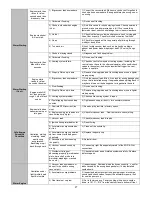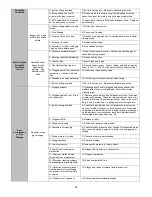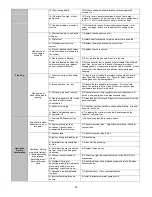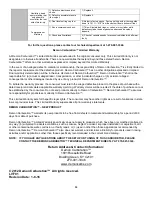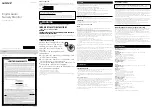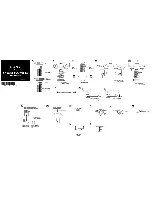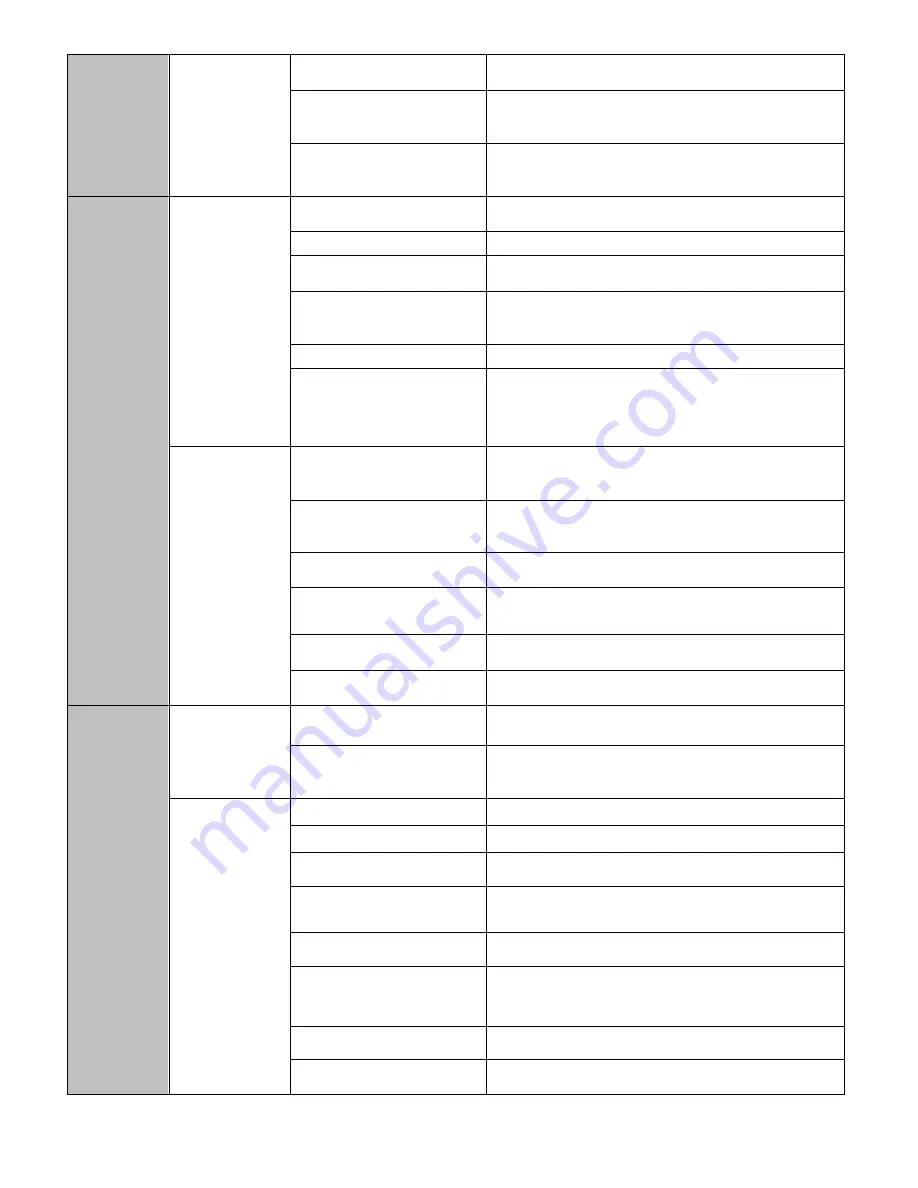
19
15) Poor driving habits.
15) Reduce speed, quick acceleration, screeching around
corners etc.
16) Float level too high, or float
partly sunk.
16) Set to factory recommendations, & check float weight,
replace if necessary. Factory setting, with air horn upside down,
is 1.01”+/- .015” from the cast surface to bottom of float.
17) Ignition problems or needs a
tune up.
17) Do complete tune up & physically inspect the cap, rotor,
wires, coil, plugs, points, etc. in addition to checking on the
scope.
Flooding
Gas pours out
when engine
turned off.
1) Charcoal canister is saturated
with gas.
1) Replace the charcoal canister.
2) Winter fuel
2) Isolate heat to carburetor or get summer fuel is possible
3) Kinked hoses in venting
system.
3) Replace the kinked hoses with correct kind.
4) Stuck or blocked check valves
in the vent hoses or elsewhere in
the system.
4) Replace the check valves.
5) Gas tank vent is blocked.
5) Fix or replace the gas cap if vent is in the cap.
6) Gas line located too close to a
heat source (such as a radiator
hose or exhaust manifold).
6) This causes the fuel to expand & be forced past the needle &
seat. Also, fuel can boil in the carb if there are improper or
missing gaskets or spacers between the carb & manifold. A heat
riser stuck in the closed position will also cause boiling and
flooding.
Gas pours out
when the engine is
running.
1) Dirt stuck on tip of the needle
& seat.
1) Clean the tip off carefully or replace the needle and seat &
clean the entire fuel system out. Check for defect canister,
causing debris or fuel contamination.
2) Idle speed is set too fast.
2) Reduce the idle speed to factory specs. If it will not idle
slowly, the mixture is set too lean, or there is a vacuum leak
somewhere (usually not in the carb).
3) Fuel pump pressure too high.
3) Check pressure. Use a regulator to control the pressure or
put on a new pump (don't use high pressure type).
4) Gas is very gummy, old, or has
too much alcohol or other
chemicals in it.
4) Clean bad gas out of carb. Clean out of fuel system. Use only
good quality gas.
5) Choke not working.
5) Check cause of choke failure, choke pull-off failure, or loss of
power to the choke.
6) Needle not seated properly
during initial fill.
6) Try tapping the fuel inlet or needle & seat area with the
handle of a screwdriver.
Hesitation
During
Acceleration
Engine stalls when
transmission is put
into gear.
1) Fast idle RPM incorrect (too
slow)
1) Speed up the fast idle to factory specs.
2) Engine running too lean
because of vacuum leak or
misadjusted idle fuel mixture
2) Check for vacuum leak. Adjust idle fuel mixture. Check for
vacuum leak.
Hesitation, stalling,
stumbling, flat spot,
or dead spot during
acceleration:
Backfiring or spit
back up through
carb.
1) Vacuum leak.
1) Check for vacuum leak & fix it.
2) Ignition timing retarded too far.
2) Reset timing.
3) Accelerator pump nozzle has
dirt in it.
3) Clean out the nozzle tip.
4) Accelerator pump cup swollen
up from contact with bad gas or
chemicals.
4) Replace the pump cup.
5) Vacuum hoses hooked up
wrong.
5) Connect up right. Be especially careful of the EGR & Dist.
connections
6) Distributor timing not
advancing properly (worn breaker
plate, worn shaft, pin hole in
diaphragm, crack in hose, etc.)
6) Check distributor and all related systems carefully. Replace
defective parts.
7) Secondary air door adjusted
too loose
7) Tighten air door ¼ turn counterclockwise
8) Incorrect accelerator pump
nozzle
8) Install a larger accelerator pump nozzle













